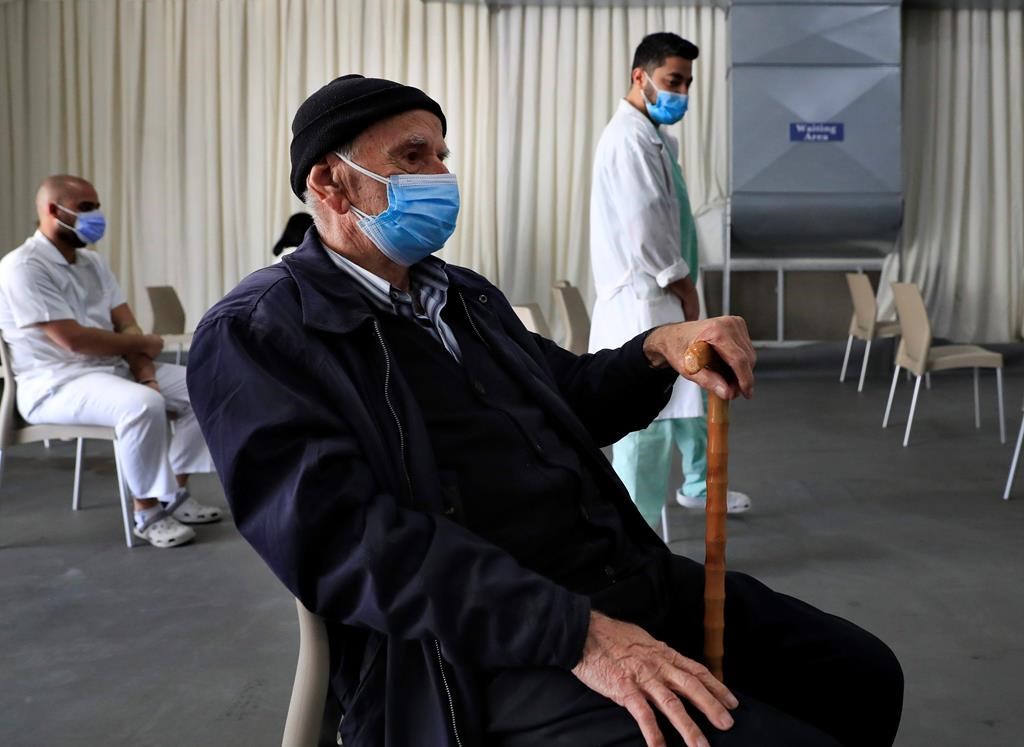Advisory table says Ontario must make location priority for vaccinations

Posted February 26, 2021 11:34 am.
Last Updated February 26, 2021 12:15 pm.
As the province prioritizes people over the age of 60 to first be inoculated against COVID-19, Ontario’s Science Table Advisory board says that while the virus has greatly affected the older demographic, disadvantaged and racialized urban neighbourhoods ought to receive vaccines just as quickly.
In a publication titled “A Strategy for the Mass Distribution of COVID-19 Vaccines in Ontario Based on Age and Neighbourhood“, Ontario’s COVID-19 advisory board said prioritizing and implementing vaccine distribution for residents based on both age and neighbourhood of residency could ensure that those at highest risk of infection, hospitalization, ICU admission, or death will be among the first to receive vaccines.
The board says the strategy would not interfere with the ongoing and future vaccination of any specific high-risk population.
RELATED: Health Canada approves AstraZeneca vaccine for use
Projected Number of Prevented COVID-19 Hospitalizations, ICU Admissions and Deaths by 2 Strategies for Mass Distribution of Vaccines in Ontario – March 1 to May 31, 2021

The province announced Wednesday it plans to start administering COVID-19 vaccines to residents aged 80 and older in the third week of March.
The task force will aim to then vaccinate adults aged 75-and-older starting April 15th, and shots will go to those 70-and-older beginning on May 1st.
Vaccinations for those 65 and up will commence around June 1st with those 60 years old and older being treated in early July. This all depends on vaccination distribution.
The COVID-19 advisory board says neighbourhoods continue to play a key factor in virus transmission.
RELATED: 40 percent of cases likely to be COVID-19 variant by 2nd week of March: modelling
“COVID-19 deaths and hospitalizations are strongly associated with individuals’ age and neighbourhood of residence,” the board concluded, according to its findings.
“As of January 16, 2021, 50 percent of Ontario COVID-19 deaths, outside of LTC and retirement homes, have occurred in just 4 percent of the population aged 16 years or above.”
The science table says around 50 percent of hospitalizations were examined in just 11 percent of the population aged 16 years or above.
“The highest risk populations can be reliably identified using the information on individuals’ age and neighbourhood of residence,” the board wrote.
“Projections indicate that a vaccine strategy prioritizing both age and neighbourhood would prevent an additional 3,767 cases of SARS-CoV-2 infection, and 702 hospital admissions, 145 ICU admissions, and 168 deaths from COVID-19 as compared to a strategy that prioritizes based on age alone.”

As a comparison, the science advisory board placed a person 80-and-up in Ontario’s most greatly affected neighbourhoods with the youngest age group in the least concerning neighbourhood.
In this hypothetical scenario, the risk of ICU admission, hospitalization, or death was well over 300 times higher.
Additionally, the data found that 1,758 Ontarians have died of COVID-19 outside of long-term care (LTC) and retirement homes as of January 16.
Of these deaths, 21 percent occurred in Ontario neighbourhoods ranked in the top 10 percent of infection rates, while 49 percent of deaths occurred in individuals aged 80 years and older.
To date, Ontario neighbourhoods with the highest cumulative incidence of COVID-19 infections are in Toronto, Peel, York, and Windsor-Essex regions.
“It may be an unpopular opinion to some, but this approach is data-driven and equitable, with positive effects for the entire province,” infectious disease physician Dr. Isaac Bogoch said.
Bogoch says that Health Canada’s approval of the AstraZeneca vaccine will “accelerate vaccination timelines.”
“It is a more portable vaccine and can be easily administered in primary care clinics.”








